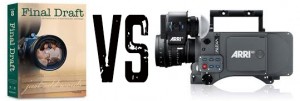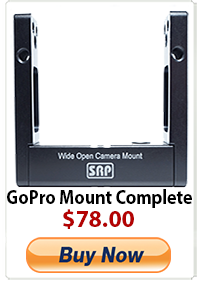Gear is not a bad four letter word: The story vs gear argument
I like to talk tech. Its something I have always done. I used to take cameras apart and put them back together without leftover screws. I learned every camera manual that was available on S16 and 35mm while others were reading On Golden Pond, The Outsiders, etc. So tech is ingrained in my brain. I have always been a mechanically inclined person. Engineering has a place in my heart and head. Jump to now where things have changed and there is more gear than every before in our industry. More offerings of camera support, cameras, lenses, accessories etc. We used to have two follow focus options in the 90’s. Arri or Chrosziel were your choices. We how have many like the ones mentioned plus Red Rock Micro, Zacuto, Movcam, D-Focus, Ikan, O’Connor, CaVision, Letus, etc. You get my point. There is approximately twenty companies for every one that there was. This means lots of choice and lots to talk about.
Now I think we are all wise enough in this business to know that story is paramount in any traditional narrative film. That doesn’t really need to be debated because of the vary definition of the word Narrative which describes a sequence of fictional or non-fictional events. The word is also a synonym for story. However we are a little more cleaver and creative that surface words and ideologies that define what a narrative should entail. Also, not all films have to have a story. This upsets people sometimes and usually its from an audience that is accustomed to how Hollywood films and the studio system does business. An experimental film does not require a sequence of events that come to a fruitful conclusion or standard arc structures. Doesn’t mean its going to be any good or that it will leave an audience satisfied but that’s not the creators problem. They are just making something visual. A good example of this is Tom Lowe’s TimeScapes. This is a 4K film that consists of a fair amount of time-lapse and highspeed shooting and presents itself as a work of art which relies on the viewer to make their own assessments and evaluations on what the message is or if there even is one. Its a great film, and I happen to have enjoyed it so I purchased it. I have heard comments from others that they didn’t get the story or that the film was just a pile of imagery and aural stimulation. Its whatever you want it to be and if you go into it with a preconceived notion of a traditional movie, it may not be your cup of tea. True the film isn’t for everyone, but what it is without question, a beautifully shot work of art.
So story is paramount if that is your goal and expectation. Shooting something without a clear and cut plot line does not lower its cache or value because someone else doesn’t get it or it breaks conventions. It doesn’t make the film a camera test or other comments I have heard. A painting doesn’t need a backstory. A song doesn’t have to rhyme. Your film doesn’t need to appease all or anyone but yourself. Yes you will limit your audience. Yes you will get flack from those who can only think in method. So what! Make what you want.
The gear argument always seems to come up when something new comes out. Its almost always tied to resolution, dynamic range, output capability, etc. This will never go away. People in the DP end of this business (especially myself) love gear. We can talk about it all day. Pros and cons, feature sets, whats better about camera X vs camera Y, etc. Every-time this happens however someone drops the “its about story not gear” comment. We have all heard it and witnessed it. Its like a bomb dropping that is supposed to make you feel dumb for talking tech. Most of the time we are not however talking about story. You will never see some writers on twitter getting a “its about the gear comment”. We all know why that is the case but its interesting. Sure its about the story if we are talking about making a narrative traditional film. To be honest, there have been many films that had a great story that were shot horribly bad or had crappy production value. The really good ones are often remade into something more sale-able. Your movie that has this fantastic story but shot on Hi-8 might be a crowd favorite, but when you sit down at the bargaining table with a distributor he is going to offer you a lot less than if you shot it on film or HD/4K/etc that is just a fact. Back in the 90’s indie filmmakers used to always say at the American Film Market that their film looked like 35. They said that with the hopes that a distributor would not hold it against them if they shot on 16mm for example. Resolution and format was a bargaining chip. Color vs Black and white was a bargaining chip. Bad sound vs good sound could shave fifty thousand dollars off your potential deal.
The gear is important. If quality was not an issue we would all be shooting mini dv and 16mm still. Anyone who denies the fact that image and audio quality, production value, etc are not important is delusional. I suppose if your intention is to never sell your work or if its an aesthetic choice then sure the gear doesn’t matter. Its a handhold vs Steadicam type argument. Sure you can get away with handheld but a well done Steadicam shot does increase production value and the sale price of your work. Quality picture, sound, post, etc appeases the audience. If story and structure is important then how it is presented is just as important.
If the gear we use really doesn’t matter, save your trip to NAB, Cinegear, IBC, etc. Everyone I know who has made the gear doesn’t matter argument owns a Red, C300 or an F3 already. If gear doesn’t matter just become an author and write a book instead. I’m sure even writers like a good ergonomic keyboard, a nice printer and a fast computer to type on. Maybe specialty screenwriting software vs plain old word?
Its okay to talk gear on twitter, facebook, forums, labs, meetups, etc. Not all of us are writers. Some of us shoot crappy stories that look great. I have.
These are the tools of our trade. Feel free to talk about them. They make our work look, sound, move and edit better. Its not a pen / keystoke vs camera argument.
Mike Sutton
Follow me on Twitter: MNS1974
-
Rush2raz











